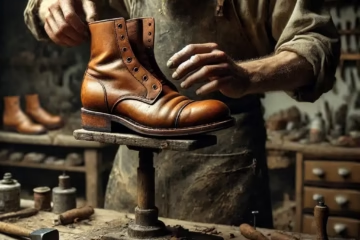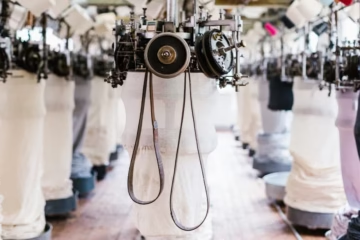The Basics Of Arch Support
Published by Tom on
Arch support in footwear is considered a necessity since the average person walks about 3000-5000 steps in a day. With all that walking, you need some comfort to aid and support your foot arch.
Arch support stems from the idea that our feet have arches; three to be exact. Each of them has a specific purpose and clinical relevance. Conditions about foot arches also involve arch support as its treatment and management strategy.
This article intends to provide all the necessary knowledge about arch support, the reason behind arch support, and the clinical relevance of arch support.
Continue reading to learn more about this topic.
Foot arches: an introduction
Among the two longitudinal arches, the medial arch is the higher of the two. It is made up of the calcaneus, the talus, the navicular, the three cuneiforms, and the first, second, and third metatarsals. It’s top is at the superior articular surface of the talus. Its two extremities, on which it rests in standing, are the tuberosity on the plantar surface of the calcaneus posteriorly and the heads of the first, second, and third metatarsal bones anteriorly.
This arch’s main characteristic feature is its elasticity, due to its height and the number of small joints between its parts. Its weakest part, that is, the part that is most vulnerable to pressure, is the joint between the talus and navicular. Still, this portion is also braced by the plantar calcaneonavicular ligament, which is elastic and can quickly restore the arch to a favourable condition when the external force is removed.
Lateral arch
The lateral arch complements the two longitudinal arches and lies on the ground in the standing position. It is made out of the calcaneus, the cuboid, and the fourth and fifth metatarsals. Its highest point is at the talocalcaneal articulation. Its central joint is the calcaneocuboid, which has a unique locking system and permits just a restricted movement. The most stamped highlights of this arch are its robustness and its slight rise, two in number tendons, the long plantar, and the plantar calcaneocuboid, along with the Extensor ligaments and the short muscles of the little toe, saves its integrity.
While these medial and lateral arches might be promptly exhibited as the part anteroposterior curves of the foot, yet the main longitudinal arch is added to by both and comprises of the calcaneus, cuboid, third cuneiform, and third metatarsal: the various bones of the foot might be eliminated without destroying this arch.
Transverse arch
Notwithstanding the longitudinal arches, the foot presents a progression of transverse arches. The transverse arch is situated in the coronal plane of the foot. The arches are complete at the back part of the metatarsus and the foremost aspect of the tarsus. Yet, in the center of the tarsus, they present more the characters of half-arches the concavities of coordinated descending and medial, so when the feet’ medial borders are set in relation, a complete tarsal dome is formed.
Clinical relevance of arches
Patients generally present with foot and lower leg issues, and many think that it’s challenging to survey these patients. This is most likely identified with the multifaceted nature and assortment of joints in this aspect of the body. There are 26 bones, 33 joints, over 100 tendons, ligaments, and muscles in each foot. By and large, we walk 10000 steps each day, 1000000 steps every year, and 115000 miles in the course of our life. The foot stands three to four times body weight during running.
As an illustration, an individual with a low longitudinal curve or flat feet frequently stands and strolls with their feet in a pronated position, where the foot everts. This makes the individual defenceless to heel pain, arch pain, and plantar fasciitis.
With high arches, you have less surface region for retaining effect. You place excessive weight on your rearfoot and forefoot regions. This can make you highly susceptible to foot conditions, for example, heel pain, metatarsalgia, or plantar fasciitis.
What is an arch support?
Arch supports are inserted in your shoes and help provide support to the arch of your foot. Arch supports help eliminate or reduce the sensation of pain that is caused by common foot arch problems. Arch supports can also be beneficial to your overall health.
Many people experience pain in their feet at some point in their lives. Most of them already suffer from common foot problems, but they can easily benefit from using arch supports. Arch supports help lessen your feet’ pain while you are standing or walking and make those activities more comfortable. It stems from the logic that they help distribute pressure across your arches, provide stability and balance, provide support, and lessen foot pain.
How can arch supports help me?
In individuals who are already suffering from chronic feet conditions or persistent pain, arch supports can help relieve troublesome symptoms and assist in recovery. Supporting the arches of your feet can have some essential benefits.
Here are some of the benefits of wearing arch supports:
Arch supports help distribute pressure over your feet. Arch supports evenly distribute pressure across your feet and aligns it with your body.
Provide stability and balance. Arch supports provide the means for balance and support. They can assist with proper posture and balance, reducing foot pain and problems related to balance and lack of adequate support.
Lessen or prevent pain. Arch supports can help lessen your foot pain. Foot pain can cause discomfort and make it challenging to go about your day and handle essential duties. However, in cases where it’s still possible, it may always be quite painful for you.
Can arch supports cause foot pain?
Yes, they can, but it’s not what you think it is. Arch supports only cause foot pain if you choose the WRONG one or improperly prescribed for your specific foot condition. For example, you inadvertently chose arch support for arched foot rather than flat foot. You’d be having a slew of foot problems by then. Therefore, it is essential to evaluate what arch support is needed in your case closely. If required, you can ask a podiatrist (foot doctor) or orthopedic surgeon for professional care.


